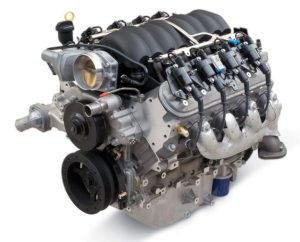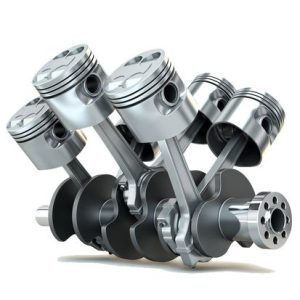For many drivers, the concept of engine braking might seem like an advanced technique used only by race car drivers. But engine braking is a surprisingly simple and effective way to slow down your vehicle, offering several benefits alongside your traditional brakes. This guide dives into the world of engine braking, explaining how it works, its advantages and limitations, and how to incorporate it safely into your driving routine.
Demystifying Engine Braking: How it Works
Unlike traditional brakes that use friction pads to slow down the wheels, engine braking utilizes the internal resistance of the engine to decelerate your vehicle. Here’s a breakdown of the process:

-
Lifting Your Foot: When you take your foot off the accelerator pedal, the throttle valve in your engine closes partially or entirely, depending on your vehicle. This restricts the flow of air entering the engine.
-
Vacuum Creation: With limited air intake, the pistons in the engine continue their downward motion, creating a vacuum in the cylinders. This vacuum effect creates resistance that tries to pull the pistons back up.
-
Engine Deceleration: As the engine tries to overcome the vacuum and maintain its normal operating speed, it acts as a natural brake, slowing down the vehicle’s rotation through the drivetrain.
The Advantages of Engine Braking: More Than Just Slowing Down
While engine braking primarily serves as a way to slow down your vehicle, it offers additional benefits that enhance your driving experience:

-
Reduced Brake Wear: By utilizing engine to slow down, you rely less on your friction brakes. This translates to extended brake pad life and potentially fewer brake repairs down the line.
-
Improved Control: Engine braking provides a smoother and more controlled deceleration compared to slamming on the brakes. This can be particularly advantageous on slippery roads or when navigating downhill sections.
-
Heel-Toe Technique (Optional): For performance-oriented drivers, engine braking can be combined with the heel-toe technique for smooth downshifting while cornering. This technique, however, requires practice and isn’t essential for everyday driving.
-
Fuel Efficiency (Slight Improvement): In some situations, engine can lead to slight improvements in fuel efficiency. As the engine isn’t actively using fuel while coasting with the throttle closed, minimal fuel is consumed during engine braking.
Understanding the Limitations of Engine Braking: It’s Not a Replacement
While engine braking offers valuable benefits, it’s crucial to understand its limitations:

-
Limited Deceleration Power: Engine alone may not be sufficient for emergency situations or sudden stops. Always rely on your primary brakes for these scenarios.
-
Gear Selection Matters: The effectiveness of engine braking is influenced by your gear selection. Lower gears provide more engine force compared to higher gears.
-
Not for Automatic Transmission in “D” Mode: Modern automatic transmissions with overdrive features may not provide significant engine braking when simply lifting your foot off the gas pedal. However, some automatics offer a “Sport” or “Manual” mode that can enhance the engine.
When to Use Engine Braking: Mastering the Technique
Engine braking is most effective when used in conjunction with your brakes, not as a replacement. Here are some ideal situations to incorporate an engine:
-
Slowing Down Gradually: When approaching a red light or stop sign, gradually lift your foot off the accelerator to engage engine for a smoother deceleration.
-
Downhill Sections: Engine can help maintain control on downhill slopes by providing a constant slowing effect, reducing reliance on your brakes and preventing overheating.
-
Entering Corners: The Engine can be used to slow down before entering a corner, allowing for a smoother and more controlled turn-in.
Safe Engine Braking Techniques: Practice Makes Perfect
Here are some tips for safe and effective engine braking:

-
Graduality is Key: Don’t abruptly lift your foot off the accelerator. Gradually ease off the pedal to create a smooth and controlled deceleration.
-
Downshifting (Optional): For more pronounced engine, especially on steep declines, you can downshift to a lower gear. However, downshifting requires practice to ensure smooth gear changes and avoid engine RPM surges.
-
Maintain Situational Awareness: Always be aware of your surroundings and traffic conditions while using the engine. Don’t rely solely on the engine and be prepared to use your brakes when necessary.
Embrace Engine Braking: A Valuable Tool for Every Driver
Engine braking is a simple yet powerful technique that can enhance your driving experience. By understanding how it works, its advantages and limitations, and incorporating safe practices, you can leverage the engine to improve your control, reduce brake wear, and navigate the roads more confidently.
Level Up Your Skills: Invest in Performance Parts
For driving enthusiasts who crave a more dynamic experience, consider incorporating performance-oriented parts alongside mastering the engine. Upgrading specific components can further enhance your car’s handling and responsiveness:
-
High-Performance Brake Pads: Investing in high-performance brake pads designed for increased heat resistance can complement your engine technique, especially for spirited driving or frequent downhill sections.
-
Upgraded Suspension System: A performance suspension system can improve your car’s handling and stability, particularly when combined with effective engine for smoother cornering and transitions.
-
Aftermarket Air Intake Systems: For vehicles with naturally aspirated engines, an aftermarket air intake system can improve airflow and potentially enhance engine braking effectiveness by creating a stronger vacuum effect.
Remember, consult a qualified mechanic to ensure any performance parts are compatible with your specific vehicle and driving style.
The Key to Smooth Shifting: Mastering Clutch Control
For drivers with manual transmissions, mastering clutch control is essential for smooth and efficient engine with downshifting. Here’s a quick breakdown of the process:

-
Lift Off the Gas: Begin by gradually releasing your foot from the accelerator pedal to initiate braking.
-
Clutch Control: While the engine slows the car, depress the clutch pedal fully to disengage the engine from the drivetrain.
-
Downshift: With the clutch disengaged, smoothly shift the gear lever to a lower gear. The appropriate gear selection depends on your current speed and desired engine braking effect.
-
Rev Matching (Optional): For a truly smooth downshift, experienced drivers can practice rev matching. This involves briefly blip ping the accelerator pedal while downshifting to match the engine RPM to the selected gear’s expected RPM. Rev matching takes practice but eliminates the jerky feeling that can occur during downshifts.
-
Release and Engage: Slowly release the clutch pedal while simultaneously applying a light amount of pressure on the accelerator pedal. This smoothly re-engages the engine with the drivetrain at the lower gear.
Test Your Skills and Explore Our Latest Cars!
Now that you’ve mastered the art of engine, it’s time to experience the thrill of putting your skills to the test! Visit your local dealership and schedule a test drive in one of our latest performance vehicles. Feel the difference that engine and a finely tuned machine can make on your driving experience.
Our knowledgeable sales staff can answer any questions you have and help you find the perfect car to match your driving style and needs. Don’t wait – visit us today and discover the joy of a truly connected driving experience!
